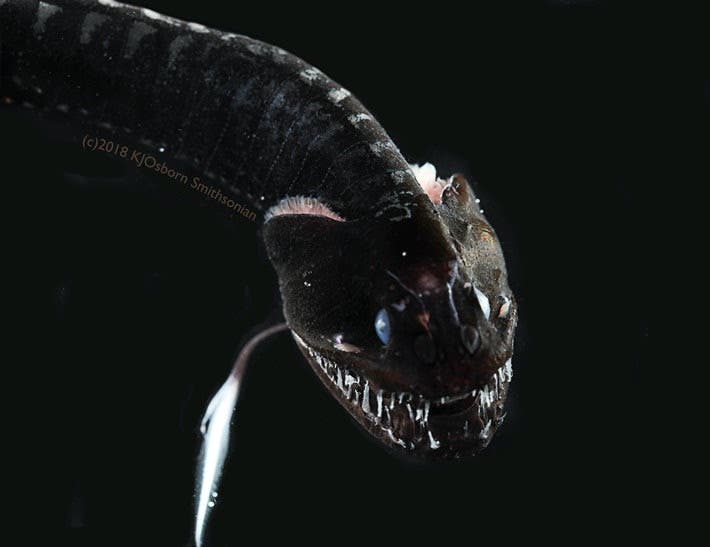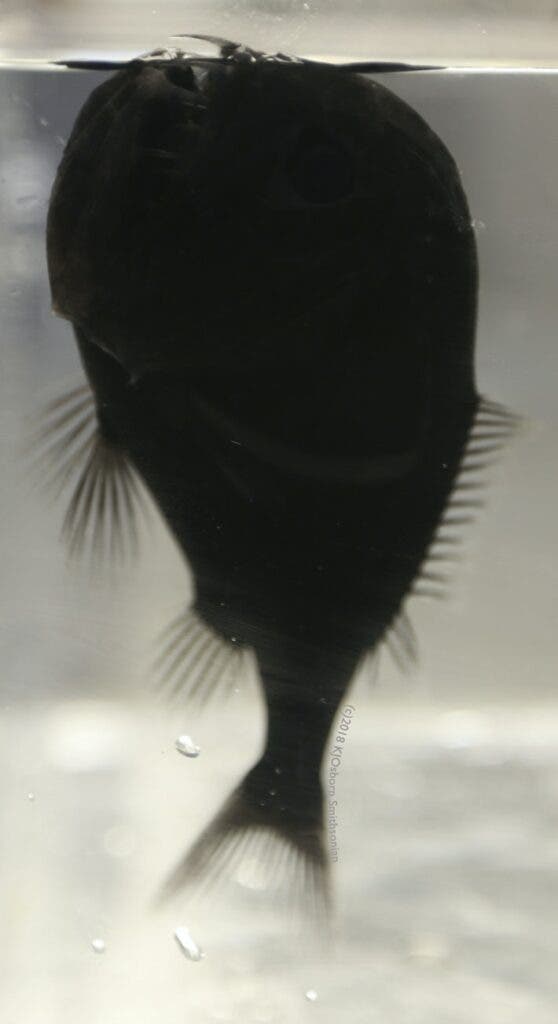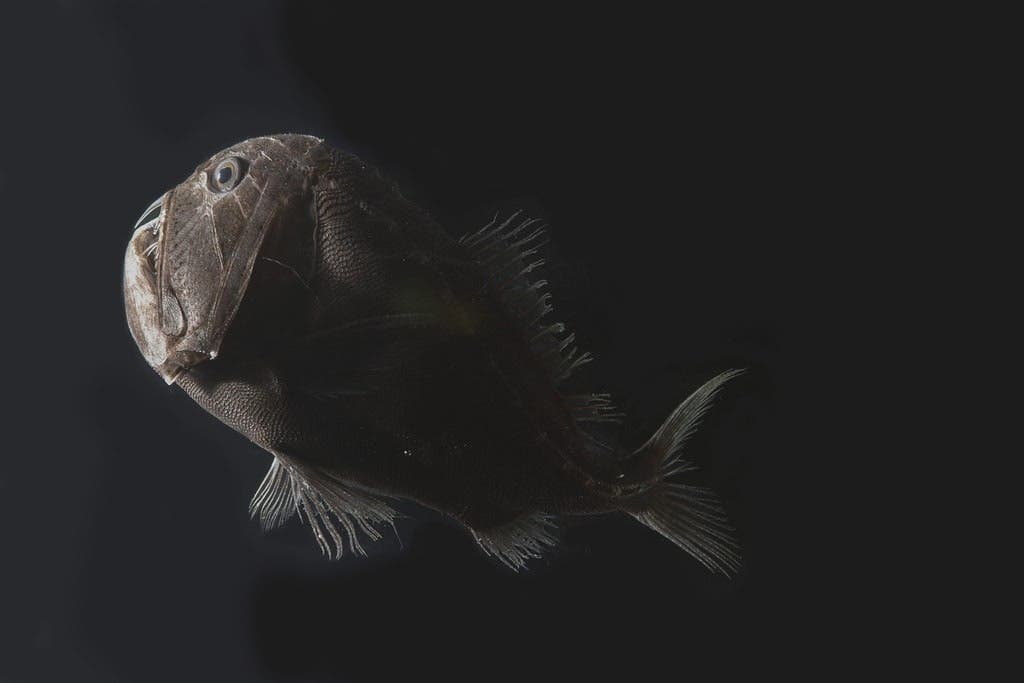
In the deep sea, there is no light. As a result, the water is almost freezing cold and contains very little oxygen. What’s more, at more than 200 meters below the surface of the ocean, the weight of the water above creates such enormous pressure, that it can be 1,000 times that at the surface.
But even in such an inhospitable environment, life still finds a way. These include cold-water coral reefs that form vibrant communities around outpourings from the Earth’s crust, as well as a host of alien-looking marine creatures.
However, it’s not entirely pitch black in the deep ocean. While sunlight has long faded away, blocked by layers upon layers of water, bioluminescent deep-sea creatures sometimes turn on the lights — and this can be a nuisance for others who would rather live happily in total darkness.
In a new study, a team of researchers led by Karen Osborn, a zoologist at the Smithsonian, has identified 16 new species of deep-sea fish whose skin is so black, it reflects less than 0.5% of the light that hits it.
“Transparency and mirrored surfaces—common camouflage strategies under the diffuse solar illumination of shallower waters—are conspicuous when illuminated by directed bioluminescent sources due to reflection from the body surface,” the researchers wrote in a paper published in Current Biology.
Pigmentation allows animals to absorb light from bioluminescent sources, rendering them visually undetectable against the dark background of the deep sea,” they added.
These ultra-black fish have such a well adapted camouflage to the deep sea that the researchers could barely take pictures of them beyond their silhouettes.

In order to unravel how the deep-sea fish achieve their extraordinary camouflage, the researchers collected tissue samples with the aid of the Western Flyer research vessel just outside California’s Monterey Bay and examined them under the microscope. What they found was quite impressive.

The differences in human skin and hair color are owed to the content of melanin, a pigment produced by melanosomes in melanocyte cells.
In the newly identified deep-sea fish, the melanosomes are concentrated in a thin layer right at the top of the skin’s surface. Their unique distribution forms a highly effective structural light trap, stopping light from bouncing back and thus obscuring the fish.
This nifty pigment arrangement conceals the fish to the point they become virtually invisible in the deep ocean, even when pesky light-emitting creatures are in their vicinity.
These fish are so black that the researchers had to painstakingly position strobe lights just right to catch a photo of the fish, such as this striking image of the Pacific Blackdragon.
The only other vertebrates that have ultra-black features are Birds of Paradise, whose ultra-black features also absorb around 99.95% of incoming light. There are also some butterflies that have certain parts of their wings ultra-black, creating a marvelous contrast with their brightly-colored wings. Rather than camouflage, these butterflies are keen to be observed by the opposite sex.
However, no natural camouflage rivals the darkness of Vantablack, an artificial material developed at MIT. Made from carbon nanotubes, Vantablack absorbs 99.996% of light, making it the darkest material in existence by a longshot.
Remarkably, many of the 16 deep-sea ultra-black fish are not related. According to the new study, there isn’t one common ancestor to the fish, suggesting that the light-trapping pigment structures evolved independently — what scientists call convergent evolution.
They also use the camouflage for different purposes. Some ultra-black fish rely on the camouflage to avoid being prey to predators, others use it to find prey and become more efficient predators.
One of the species, the frightening-looking threadfin dragonfish, has ultra-black camouflage only as a juvenile. After it matures, it can come out of hiding and fulfill its role as an apex predator of the deep open sea.
The ultra-black structures were also found lining the guts of some species, likely to prevent the predators from glowing like lanterns when they devour a bioluminescent creature.
That’s quite impressive — and these findings may prove to have greater implications beyond revealing intriguing new biology. The researchers are rather confident that the ultra-dark skin properties can be mimicked to produce artificial materials that may be useful in cameras, camouflage, and highly-sensitive telescopes.









